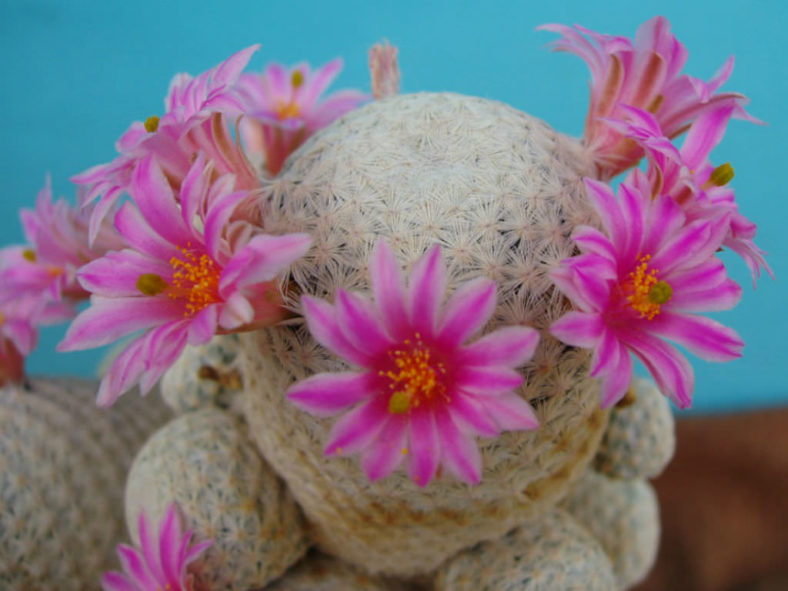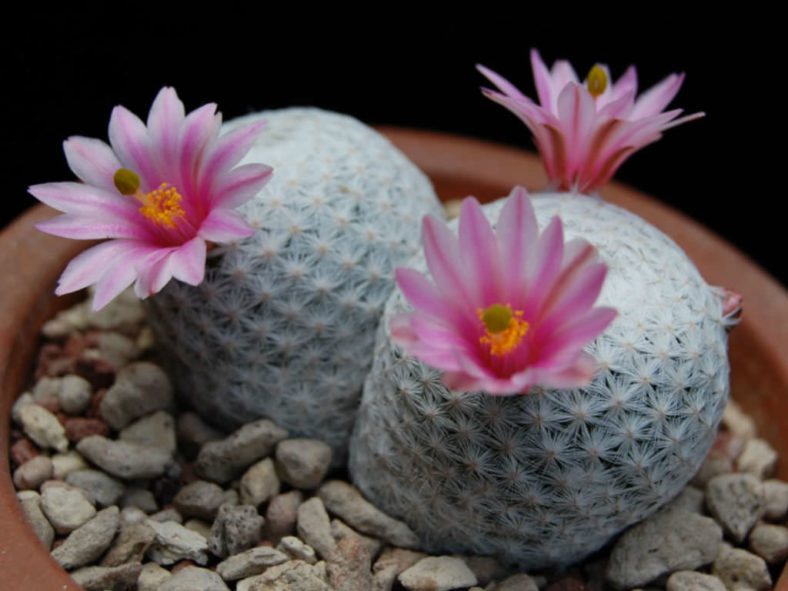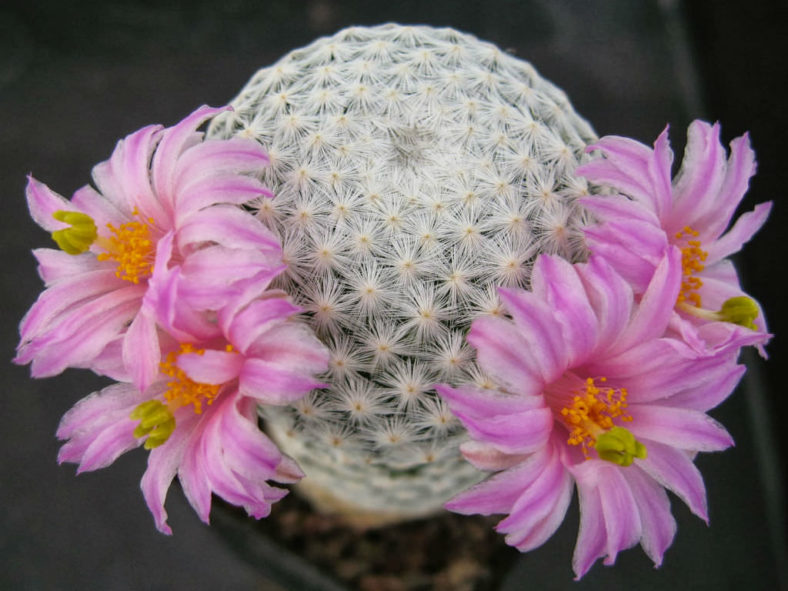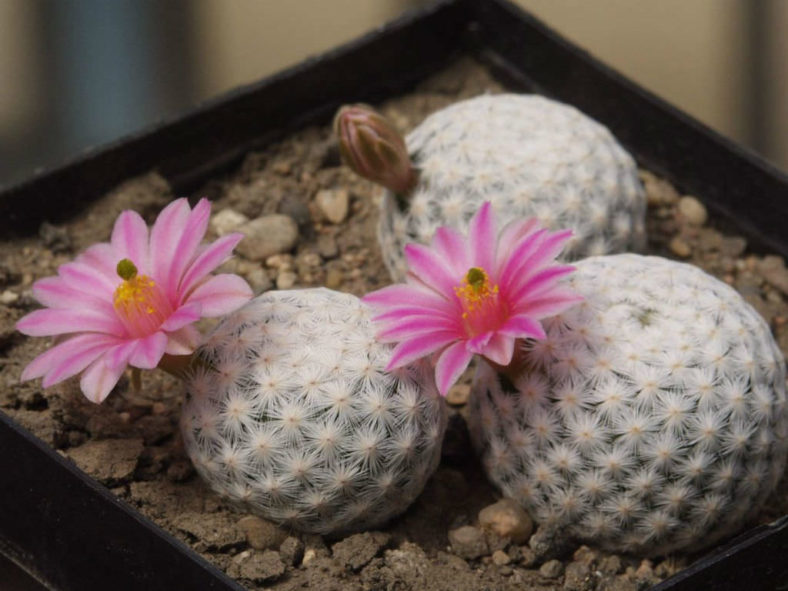Scientific Name
Mammillaria solisioides Backeb.
Common Name(s)
Golf Ball, Golf Ball Cactus
Synonym(s)
Chilita herrerae, Escobariopsis herrerae, Neomammillaria herrerae
Scientific Classification
Family: Cactaceae
Subfamily: Cactoideae
Tribe: Cacteae
Subtribe: Cactinae
Genus: Epithelantha
Etymology
The specific epithet "herrerae" (pronounced "her-ER-ah-ee") honors Alfonso Luis Herrera (1868-1942), a Mexican biologist, author, educator, and founder of several institutions in Mexico City, including the Botanical Garden of Chapultepec Park.
Origin
Mammillaria herrerae is native to Mexico. It occurs in a very small area in Queretaro.
Description
Mammillaria herrerae is a cute, small cactus with spherical or slightly elongated stems covered with clusters of white spines. The stems can grow solitary or produce offsets that sprout around the base, reaching 3.2 inches (8 cm) in height and 1.4 inches (3.5 cm) in diameter. The tubercles are cylindrical, closely set, and tipped with an areole that bears 100 or more bristly radial spines.
The showy flowers are diurnal, pale pink to red-violet, and appear in spring. They can reach 1 inch (2.5 cm) in length and are nearly equal in diameter. The plant starts producing flowers at 5 to 7 years old, and the stems are at least 1.2 inches (3 cm) in diameter. The fruits are spherical, whitish, and contain black seeds.

How to Grow and Care for Mammillaria herrerae
Hardiness: USDA hardiness zones 10a to 11b: from 30°F (-1.1°C) to 50°F (10°C).
To encourage better flowering, allow the plants to enjoy a cooling period in the winter and suspend watering. Unlike many other cacti, which use their ribs as storage devices, Mammillaria feature raised tubercles from which spines emerge. When you water, the tubercles expand to increase water storage. The flowers emerge from the axils of these tubercles on the previous year's growth, which accounts for their interesting halo effect. The cactus mustn't be exposed to prolonged dampness or standing water. Never let your cactus sit in a dish of water. Lastly, fertilize during the growing season for the best results.
Repot as needed, preferably during the warm season. To repot Mammillaria, ensure the soil is dry before repotting, then gently remove the pot. Knock away the old soil from the roots, removing any rotted or dead roots. Treat any cuts with a fungicide. Place the plant in its new pot and backfill it with potting soil, spreading the roots as you repot. Leave the plant dry for a week or so, then begin to water lightly to reduce the risk of root rot.
Learn more at How to Grow and Care for Mammillaria.
Links
- Back to genus Mammillaria
- Succupedia: Browse succulents by Scientific Name, Common Name, Genus, Family, USDA Hardiness Zone, Origin, or cacti by Genus
Photo Gallery
Click on a photo to see a larger version.


